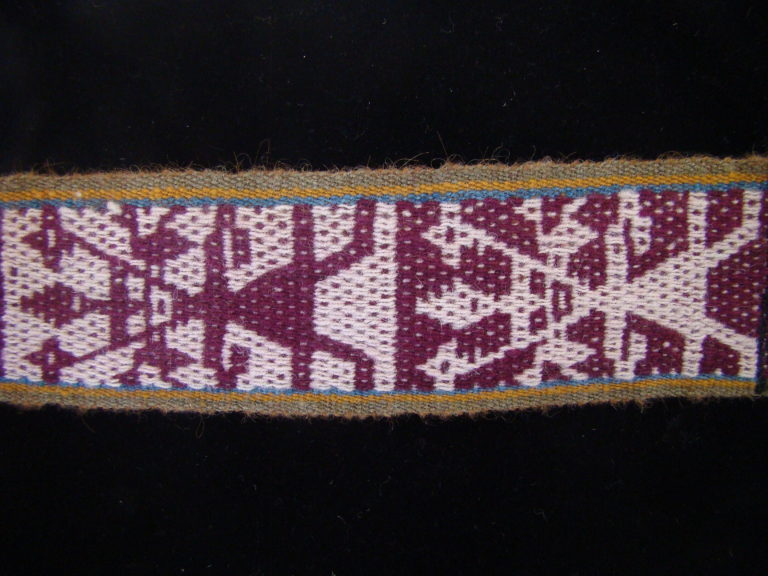Digital Textile Exhibit
BROWSE DESIGNS
Andean weaving features a wide variety of designs, representing everything from natural features to abstract designs. These designs help communicate a distinctive view of the world as well as relate aspects of personal experience and personal preference. The designs, in general, fall into several categories and are arranged according to the following mini-exhibits: agriculture; animal; astronomy; flora/plant; geometric; and people and character.

Agriculture Designs
Agricultural designs may include farming-related instruments or phenomena and are reflective of the importance of agriculture in the daily life and sustenance of Andeans.

Animal Designs
Animal designs may represent domestic or wild animals of varying types, and may also represent markings created by animals such as paw prints.

Astronomy Designs
Andeans weave designs that reflect their observations of the sky and the objects seen there, such as the stars and sun.

Geometry Designs
Geometric designs of various types are woven into textiles in the Andes, including such shapes as triangles, and they may be based on or inspired by natural phenomena such as flowers.

Flora/Plant Designs
Andean textiles feature a variety of plant-related designs including flowers, leaves, fruits, herbs, and seeds, as well as weeds and parasites.

People & Character Designs
People and characters appear as designs on Andean textiles in forms both realistic and mythical and reflect everyday practices as well as religious and symbolic ideas.

Textile Types
Andeans create a number of different types of textiles, intended for human wear, everyday use, or ritual purposes. Learn more about the types of textiles created for men and women in this exhibit.

Weaving techniques
Andeans employ a variety of techniques in creating their weaving, including one-sided and two-sided weavings and other techniques that range from the simple to the complex. Learn more about Andean weaving techniques in this exhibit.

Process of weaving
The process of weaving involves multiple steps: shearing, washing, spinning, skeining, dyeing, warping, weaving, and finishing. Learn more about the process of weaving in this exhibit.
The Andean textile tradition goes back thousands of years, and has changed over time.